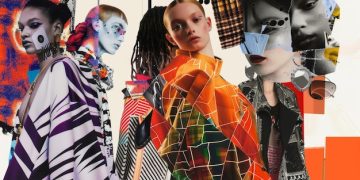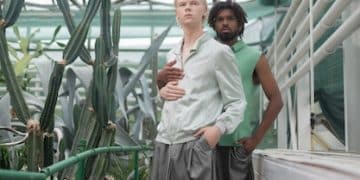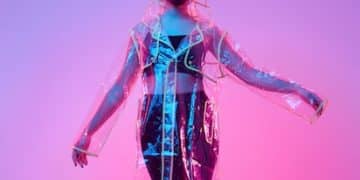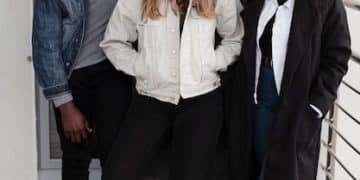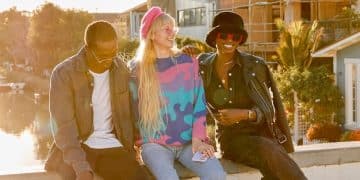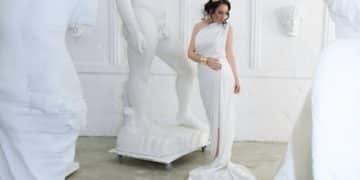Underground Fashion’s Future: Predictions for the Next 5 Years
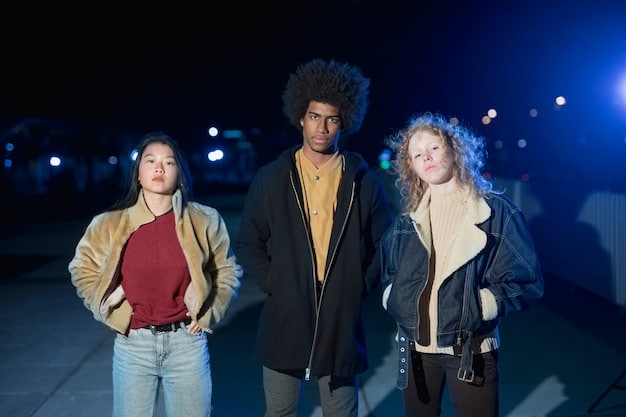
Underground fashion’s future in the next five years will likely be shaped by increased personalization, integration of sustainable materials, and the rise of digital fashion experiences.
The world of fashion is constantly evolving, and underground fashion is no exception. Let’s dive into some expert predictions about underground fashion’s future: predictions for the next 5 years in the US.
The Evolution of Materials in Underground Fashion
Underground fashion has always been about challenging the mainstream. Material innovation stands out as a key area of development, pushing boundaries with sustainable and tech-integrated materials.
How are trends in material innovation impacting apparel creativity? Let’s explore the cutting-edge materials and techniques empowering underground designers.
Eco-Friendly Textiles
Sustainability is no longer a niche concept – it’s a core value. Underground brands are embracing innovative eco-friendly textiles to reduce their environmental footprint.
Tech-Integrated Fabrics
Fashion is merging with technology like never before. Tech-integrated clothing is opening new possibilities for functionality and expressiveness.
- Using organic cotton, hemp and recycled fabrics to reduce pollution.
- Employing plant-based dyes and waterless dying methods.
- Experimenting with mycelium “leather” and lab-grown materials.
- Embedding LEDs and sensors for interactive garments.
These developments are not just about aesthetics; they’re about creating a more responsible and innovative industry.
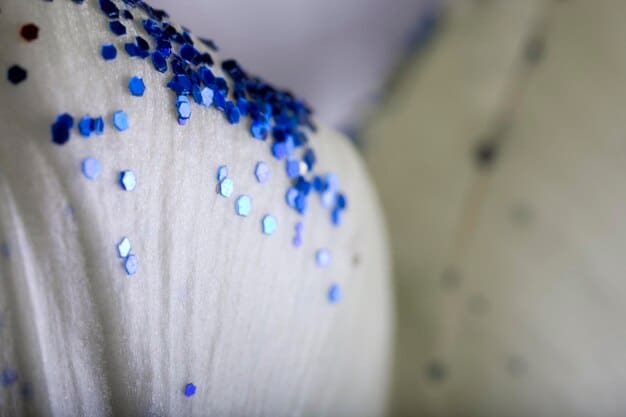
The embrace of innovative, eco-friendly, and tech-integrated materials is reshaping the landscape of underground fashion and making it more relevant to modern consumers.
The Blurring Lines of Gender Identity
Gender fluidity is influencing fashion more directly. Underground brands are leading the way in creating versatile, gender-neutral pieces that blur traditional lines.
How will the evolution of gender impact the future of inclusive fashion? The answer lies in adaptable designs, inclusive marketing, and a focus on identity.
Inclusive Sizing
Brands are now designing clothes to fit all humans, regardless of how they identify. Inclusive sizing ensures everyone can access fashion that makes them feel good.
Adaptable Designs
Clothing features are becoming more versatile, allowing individuals to change their look to match their mood or identity. Adaptable designs mean anyone can express their true self.
- Gender-neutral silhouettes that don’t conform to traditional tailoring.
- Customizable garments that can be modified to fit different body types.
- Marketing campaigns that feature diverse models of different genders and sexualities.
- Focus on individuality and self-expression over rigid definitions.
Fashion that adapts to the wearer, not the other way around. This kind of inclusive future fosters diversity and creativity.
The movement toward gender inclusivity is transforming underground fashion and making it a welcoming space for all.
Digital Fashion: Virtual Spaces and Avatars
The digital world is becoming as important as real life, especially for underground fashion. Virtual fashion will likely become more prevalent.
How do digital spaces affect self-expression and fashion visibility? The future includes virtual fashion shows, digital-only garments, and avatar customization.
Virtual Catwalks
Designers are showcasing their collections in virtual events, reaching a global audience without the environmental impact of physical shows. Technology enables a wider reach.
Digital-Only Garments
Why limit fashion to the physical world? Digital-only clothing, paid for like real garments, allows wearers to customize avatars with unique looks. Virtual clothing minimizes waste.
- Online spaces where individuals can express themselves through attire.
- Exclusive digital clothing that enhances user individuality and influence.
- Wider access to avant-garde fashion, regardless of geographic constraints.
- Reducing the environmental impact of fast fashion through virtual alternatives.
This push into digital fashion offers new ways and opportunities to engage with fashion.
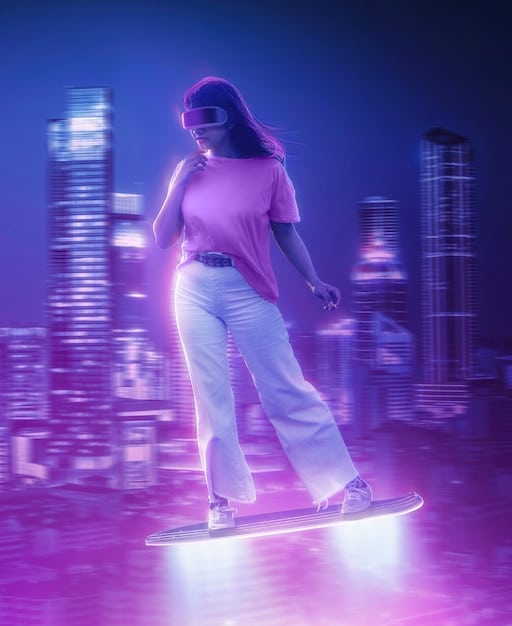
The move toward digital fashion is more than just a trend; it’s a fundamental shift that is unlocking new creative and business opportunities.
Underground Fashion as Resistance and Activism
Underground fashion has always had political undertones. As social and political awareness grows, this will become more pronounced.
How does fashion tie into social issues like climate change and cultural identity? Expect collaborative collections, upcycled garments, and advocacy campaigns.
Collaborative Collections
Designers are teaming up with activists and nonprofits to raise awareness and funds for causes. By collaborating, they amplify voices.
Upcycled Garments
Rejecting mass consumption, underground brands are turning discarded clothing into unique pieces. Fashion as art and advocacy merges.
- Fashion serving as a medium for conveying social and political messages.
- Designers supporting causes related to social justice and environmental activism.
- Campaigns using fashion to challenge established norms.
- Promoting sustainable solutions that counteract fast fashion’s harmful effects.
Activism is expected to take on more importance in underground fashion.
The intersection of fashion and activism is growing, leading to impactful and meaningful change.
Hyper-Personalization Through AI and Customization
Personal expression takes center stage. Underground fashion embraces AI and customization for a unique, individual experience.
How will personal data and automation impact fashion customization? Consider personalized designs, body-scanning tech, and AI pattern generation.
Personalized Designs
AI can analyze consumer preferences and create designs tailored to individual tastes. Each outfit is unique, reflecting personal style.
AI Pattern Generation
AI tools can create custom patterns based on body scans, leading to clothing that fits perfectly. Customization becomes streamlined.
- Fashion that reflects individual style and body shape.
- Technology that adjusts clothing to personal preferences.
- Algorithms that take body scans and personal data to suggest and create unique fashion pieces.
- Individual connections to brands and tailored fashion pieces.
Personalization is expected to revolutionize underground fashion experiences in coming years.
This focus on personalization is reshaping the fashion industry and meeting consumer demands for individuality.
Decentralization and the Rise of Independent Designers
Underground fashion breaks away from traditional structures. With the advent of e-commerce platforms, independent designers are thriving.
How are new distribution methods changing which brands succeed? The future includes pop-up shops, indie marketplaces, and decentralized manufacturing.
Pop-Up Shops
Independent designers connect with consumers at temporary locations, building personal connections and brand awareness. Pop-ups foster niche communities.
Indie Marketplaces
Online platforms celebrate unique, independent brands. These marketplaces provide alternatives away from mass-produced items.
- A surge of new, independently-owned labels expressing diverse viewpoints.
- Platforms focused on facilitating connections between smaller brands and consumers.
- Innovative business models that circumvent established norms, fostering creativity.
- Democratization of fashion through decentralized production and distribution.
Underground fashion is expected to become more decentralized.
The rise of independent designers and decentralized systems is fostering a more vibrant and democratic fashion landscape.
| Key Trend | Brief Description |
|---|---|
| 🌿 Sustainable Materials | Eco-friendly textiles like hemp and recycled fabrics reduce environmental impact. |
| 🌐 Digital Fashion | Virtual catwalks and digital-only garments create new avenues for expression. |
| 🎨 Hyper-Personalization | AI and customization tools enable designs tailored to individual tastes. |
| ✊ Activism | Fashion is used as a medium to convey social and political messages. |
FAQ
▼
Sustainable materials include organic cotton, recycled fabrics, and innovative options like mycelium “leather.” These options minimize environmental impact by reducing pollution and waste.
▼
Gender fluidity in fashion is shown through gender-neutral designs and inclusive sizing. Clothing is designed to suit all individuals, irrespective of gender identity.
▼
Digital fashion involves creating virtual clothing for avatars and digital spaces. It’s important as it offers new creative avenues, reduces waste, and expands access beyond physical constraints.
▼
Designers often team up with activists or nonprofits to create collaborative collections raising awareness about particular social or enviromental causes. This helps amplify important social messages.
▼
AI analyzes consumer preferences and generates customized designs, ensuring clothing reflects personal styles. AI creates custom patterns based on body scans, leading to uniquely fitting apparel.
Conclusion
The next five years promise a vibrant and innovative period for underground fashion. Brands that embrace sustainability, inclusivity, digital experiences, and personalization will likely thrive and resonate with consumers eager for unique and expressive fashion.
